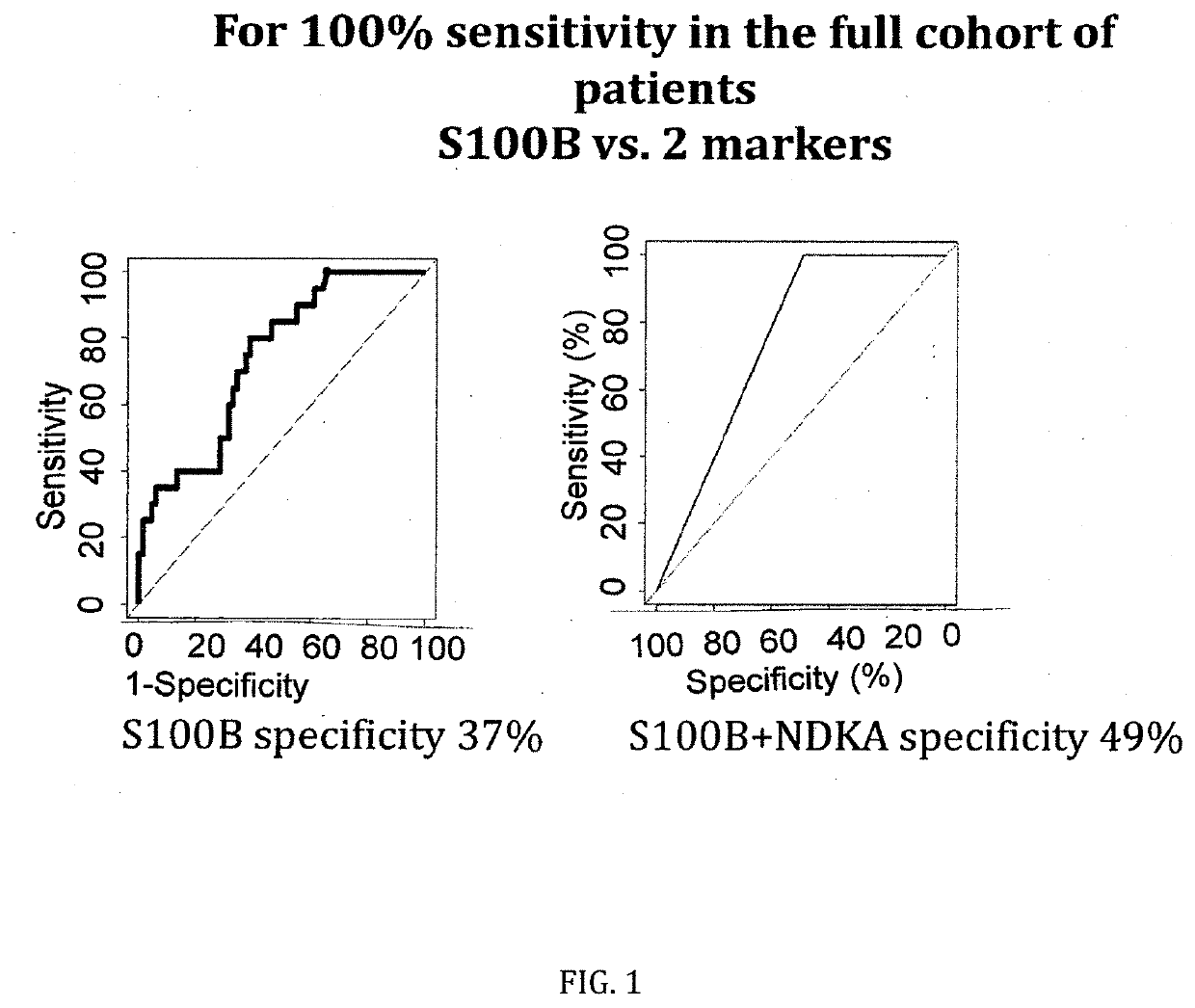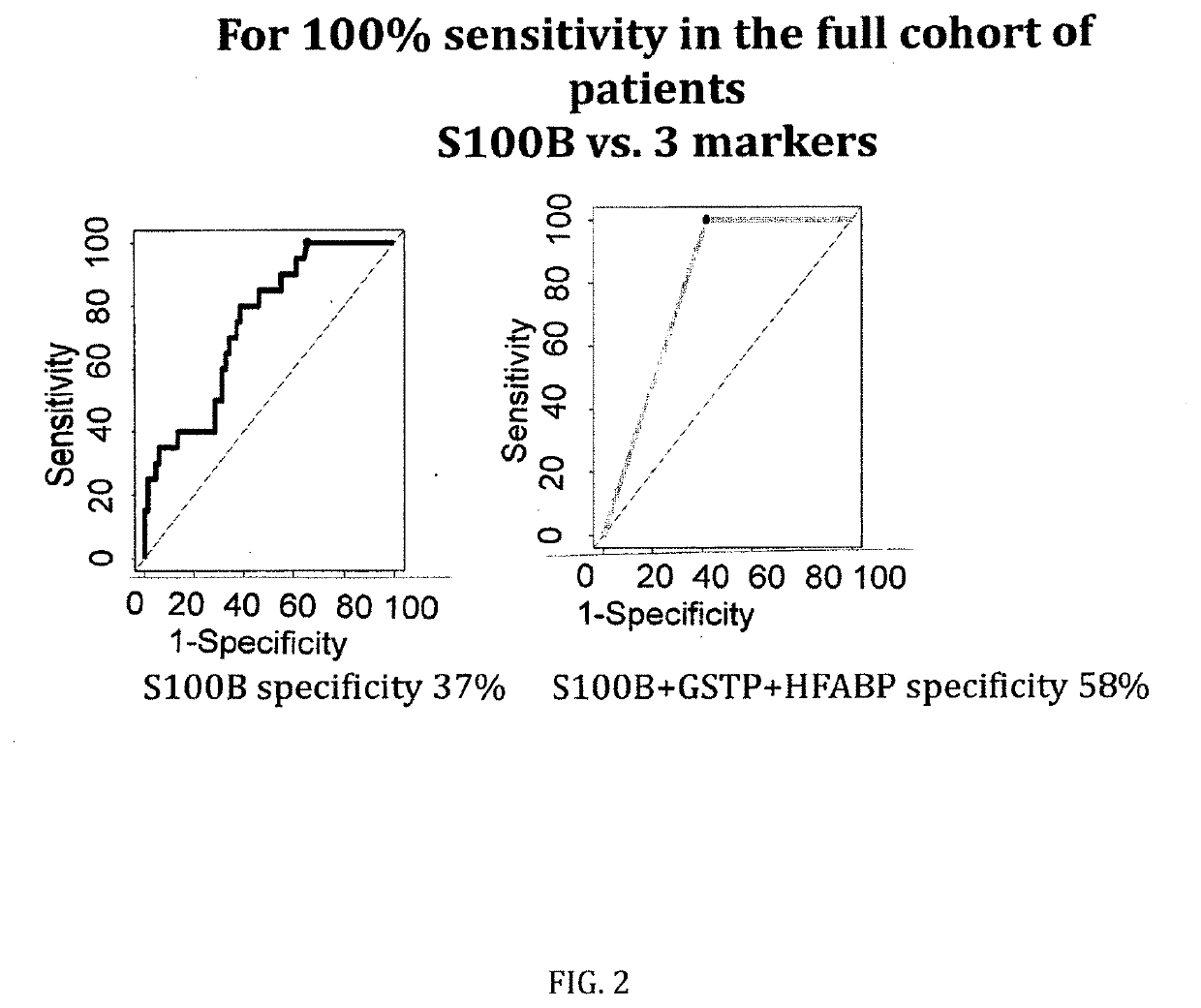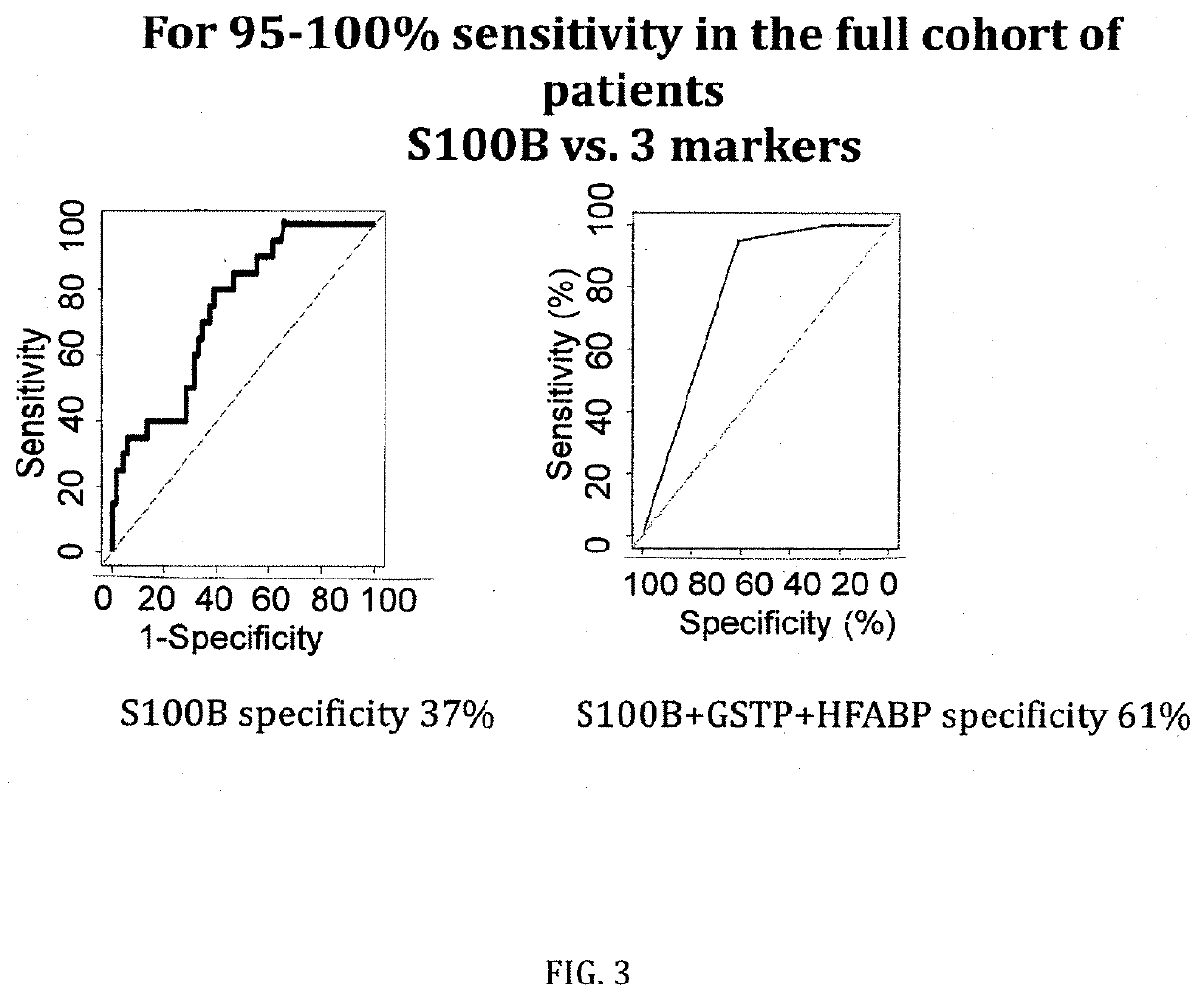Markers and their use in brain injury
a brain injury and marker technology, applied in the field of biomarkers, can solve the problems of high health cost, many scans are negative, and cost-intense, and achieve the effect of reducing ct scans
- Summary
- Abstract
- Description
- Claims
- Application Information
AI Technical Summary
Benefits of technology
Problems solved by technology
Method used
Image
Examples
example 1
[0085]The blood GSTP1, H-FABP, NDKA, VCAM and S100B content of patients presenting or not cerebral lesions on CT scan with a Glasgow Coma Scale >13 and within 6 hours after the onset of TBI were quantified and compared using ELISA analysis. The study population comprised a total of 97 individuals.
[0086]ELISA was performed using 96-well homemade assays for GST-Pi and NDKA as described elsewhere (Turck, et al. 2012), H-FABP from Hycult (NL) and CCL23, SAA, peroxiredoxin 1 and S100B from Abnova (TW). Each plasma sample were assayed in duplicate and distributed randomly on the plates.
[0087]Protein levels were initially expressed in relative fluorescence unit (RFU) and concentrations were calculated using a calibration curve obtained on the same plate with the recombinant proteins. Statistical analyses were performed using IBM SPSS Statistics software version 19.0.0 (IBM Corporation, NY, USA). To assess the ability of proteins to discriminate between different populations, non-parametric...
results example 1
[0090]The figures as described above show the results of the specificity comparison of S100B alone vs. different panels of two or three molecules / biomarkers of the invention. The sensitivity has been set at 100%. It demonstrates that our cohort is comparable to all published mTBI cohorts analysing S100B. When sensitivity is set at 100%, a 37% of specificity is obtained. GSTP and HFAB have a specificity of 25%, NDKA of 12% and VCAM of 40%. This confirms all previous results on the limited capacity of S100B alone to rule-out negative CT patients and the need of additional parameters / biomarkers.
Marker(s)Sensitivity %Specificity %S100B10037GSTP10025HFABP10025NDKA10012VCAM10040SAA100CCL23100Peroxiredoxin100
[0091]When molecules are combined into panels of three molecules, the specificity increases up to 58% (S100B, HFABP and GSTP) and up to 49% when two molecules are combined (S100B and NDKA).
Marker(s)Sensitivity %Specificity %S100B / HFABP / GSTP10058S100B / HFABP / NDKA10057GSTP / HFABP / NDKA10051...
example 2
[0097]The blood H-FABP and GFAP content of patients presenting cerebral lesions or not on a CT scan were quantified and compared using ELISA analysis. The study population comprised a total of 25 individuals. The ELISA analysis was carried out in the same manner as in Example 1, above.
[0098]Demographic Characteristics of the Study Population
Ctrl (n = 15)CT− (n = 24)CT+ (n = 1)Age, Mean40.67 (10.06)44.38(14.76)44(SD)Sex (F)771HFABP POCT—3(1.89-7.55)5.1Median (IQR)GFAP MSD39.47 (22.64)186.95(52.32-711.15)38149Median (IQR)POCT = point-of-care testing kitMSD = Meso Scale Diagnostics, LLCIQR = interquartile range
PUM
 Login to View More
Login to View More Abstract
Description
Claims
Application Information
 Login to View More
Login to View More - R&D
- Intellectual Property
- Life Sciences
- Materials
- Tech Scout
- Unparalleled Data Quality
- Higher Quality Content
- 60% Fewer Hallucinations
Browse by: Latest US Patents, China's latest patents, Technical Efficacy Thesaurus, Application Domain, Technology Topic, Popular Technical Reports.
© 2025 PatSnap. All rights reserved.Legal|Privacy policy|Modern Slavery Act Transparency Statement|Sitemap|About US| Contact US: help@patsnap.com



